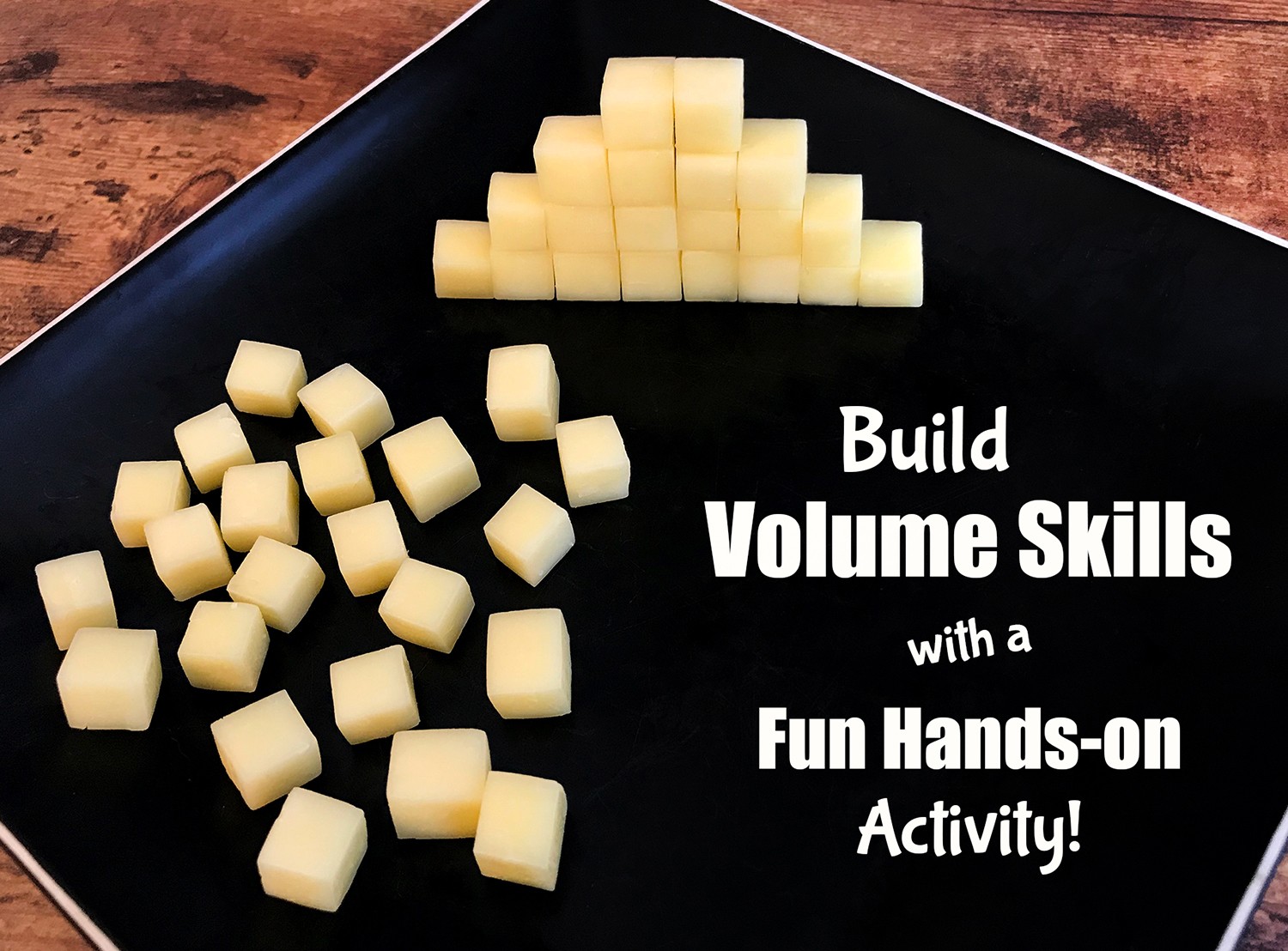
If you're looking for a fun, hands-on geometry activity to help your students understand basic volume concepts, you've found it! In this article we show you how you can use simple snacks or pantry items to reinforce basic volume concepts, such as counting cubic units and finding the volume of a rectangular prism. By the time your students complete this hands-on math activity, they will be volume experts!
Before you begin this volume-building activity, you will want to equip your students with the right "building blocks." Choose a cube-shaped food that your students will find easy to stack and sort into a variety of shapes. Cheese cubes are ideal for this activity, but you can also use sugar cubes, mini marshmallows, cubed fruit, or even Chex cereal in a pinch. Once your students have their building blocks ready, here's how they can use them to practice volume:
In this exercise, students will use their food cubic units to build different shapes. (In our example, we use cheese cubes.) Students will find the volume of each shape by counting the number of cubic units they used to build the shape. The options for building different shapes are practically endless!
You may choose to have your students work in pairs to practice counting cubic units. One student may build a shape, while the other student calculates the volume. Then they can switch off!
You may also give your students a set of simple parameters to fulfill as they create their shapes. For example, you may tell them to create a shape that has a volume of twelve cubic units. See how many variations your students can come up with!
Counting cubic units is a great introduction to volume. You may want to try out this very simple activity with your third-grade class.
For students who are ready to take their volume skills up a notch, try out this activity with your third, fourth, or fifth grade class.
Instead of creating just any shape with their food cubes, students will build rectangular prisms of various sizes.
Your students can practice finding the volume of a rectangular prism by multiplying the length times width times height of each prism they build.
Alternatively, you may give your students the length, width, and height requirements of the rectangular prism you want them to build. Then they can plug these numbers into the volume formula and find the volume of the shape.
You may find that building rectangular prisms of various shapes may require the use of many cubic units. In this case, have your students work together in pairs or small groups so they can pool their cubic units and build a variety of rectangular structures.
As these activities illustrate, learning basic volume concepts doesn't have to be complicated. It's as simple as stacking cheese cubes and making different three-dimensional shapes!
What are some of your favorite ways to teach volume in your classroom? Our teaching community would love to hear from you, and so would we! Please leave us your feedback in the comment section below.
If you're looking for more volume practice for your students, check out the interactive volume activities available on iKnowIt.com!